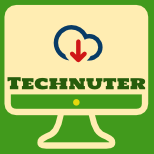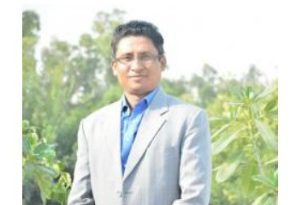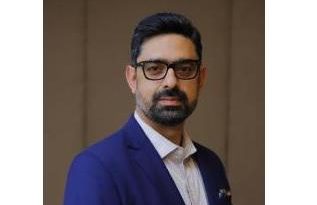“The current internet is a sea of ads, hackers and trackers” – By, Mr. Gaurav Kumar, CEO & Co-Founder, Myraah
 There have been activities and conversations around Web 3.0 in India? What role will Myraah play in the space?
There have been activities and conversations around Web 3.0 in India? What role will Myraah play in the space?
The fundamental tenets of Web 3.0 are privacy and ownership of data. Web 3.0 technology allows the owner of digital assets to claim and establish their ownership. This is achieved through cryptographically hashing the content. Every piece of content has a unique hash. Any user who has created a piece of content can hash the content and get a unique identifier. This identifier can then be linked to the user, leading to the verification of ownership.
Myraah is a Web 3.0 platform, where a user can store their documents, music, videos in a secure & private manner. Myraah is on a mission to:
- Enable Web 3.0 adoption
- Build easy to use applications, enabling the switch
- And building application in Indian languages
- How will adoption of Web 3.0 benefit businesses? Which are the sectors that are likely to benefit the most?
There are three features specific and unique to Web 3.0 which can benefit businesses that adopt the technology:
Decentralization: A web 2 service goes down when the server hosting it goes down. Web 3.0 relies on decentralized, server less network hence it never goes down – making service availability robust.
Secondly, in case of current http protocol, a user relies on downloading a file from a single server leading to heavy bandwidth consumption. In Web 3.0 services, downloads happen through many nodes, leading up to 60% bandwidth reduction which is cost saving.
Security & removal of data redundancy: In web 3.0 environment, files or data are cryptographically hashed and stored on a distributed network. So unlike Web 2 where files are stored on a server, it is not possible to hack a particular server and get access to the data.
Secondly, every data or file has a unique cryptographic hash ( i.e. content identifier), which is created based on specific content of the file. This means we don’t need to store a single unique file in multiple copies but only one. Any file can be retrieved through its hash. In web 2 however content is accessed via location identifier (example, www.sitename.com/folder/filename).
For example a picture of a lion can be stored by multiple site owners on different servers so that they can be used by different sites (example: site1.com/folder.lion.jpg , site2.com/folder/lion.jpg, site3.com/folder/lion.jpg ) , this leads to data duplication & redundancy. In Web 3.0 we just need lion# to retrieve and show the image across the internet, leading to removal of huge data redundancy the current internet suffers from.
Establishment of Content Ownership: Web 3.0 technology allows content ownership. Any business claiming any content can establish ownership of the content. Any other business using that content be it a blog post, videos, podcast etc will need to acknowledge the owner and give credit.
Businesses who are in B2B will be the first adopters of Web 3.0. Eventually B2C businesses will join when the eco-system of Web 3.0 search engine & social networks is developed over a period of time.
- What about consumers? How can they adopt Web 3.0? How will it benefit them?
The current internet is a sea of ads, hackers and trackers. Your every like, clicks and files are harvested and sold to the highest bidder. You have no privacy or ownership of content. Imagine an internet which is built by you and owned by you. Where your privacy matters. That is Web 3.0
Three specific features of Web 3.0 which can benefit consumers are:
Privacy: Web 3.0 technology is built around privacy, when you are browsing an internet through Web 3.0 browser no one can track your clicks and show ads based on them. Imagine all the goodness of ad-blocking, incognito windows, private search, even VPN- All in a single application built in the browser itself. Opera and Brave are example of such browsers. Brave, being a new entrant, already has 50 million plus users.
Uncensored Content: When you post a content on a social network or on any other website, the government or sites can censor the content. As Web 3.0 is distributed, any content on the Web3 by design cannot be censored. No one can take it down as it is not hosted by one user or server but the whole network.
Ownership : Your files, pictures, blogs, videos or podcasts will have unique hash (content identifier) for it on the Web 3.0 Once you link that hash with your user hash (user identifier), you can claim ownership of all the hashes linked to your user hash. Duplication of content doesn’t happen on the Web 3.0 as it is being fundamentally built with content unique hashes. Simply put, now you can not only read or write on the internet; you can also own a part of it.
- Different products and services that Myraah is introducing under Web 3.0? Your average price point for these products?
Myraah is a Web 3 Platform, where anyone can create their Web 3 digital identity & manage their digital assets such as: Files, Picture, Music, Videos, Notes, Documents, NFTs and Websites.
- Web 3.0 Locker: A private and secure storage, where you can store your files, pictures, videos and NFTs.
- Web 3.0 Thoughts: Your private place to store your ideas, thoughts or secrets away from bots, AI or Humans.
- Web 3.0 Website Builder: Build your public web presence on the Web 3 by launching your own blog or website. Our No Code tool enables anyone to create a website in just a few clicks, without requiring any IT skills.
Currently, all the services are available to use for free.
- What are the future possibilities for Web 3:0 in a market like India?
The internet as a whole is getting re-created. It will have vast impact not only on the Indian users but globally as well. We see many use cases and applications built around privacy and ownership benefits. Gradually the user base should expand.



